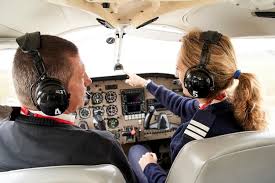Blog
Seven Essential Learning Factors for Teaching Student Pilots
- July 27, 2024
- Posted by: rsadmin_user
- Category: Education Uncategorized

When becoming a flight instructor in Canada, it is essential to understand the seven learning factors outlined in the Flight Instructor Guide: readiness, primacy, relationship, exercise, intensity, effect, and recency. This guide aims to enhance your understanding of these factors.
1. Readiness
Students must be mentally prepared to learn. Distractions from personal issues, lack of perceived value in the lesson, or a disconnect from their overall goals can hinder information retention. Instructors should approach lessons with enthusiasm, emphasizing that each step brings the student closer to becoming a licensed pilot. Clearly explain the purpose of each skill and its relevance to their development. Reviewing previous lessons before introducing new material is crucial.
2. Primacy
The primacy learning factor emphasizes teaching correct techniques from the outset. Flight instructors should demonstrate exemplary techniques, as poor demonstrations may lead students to accept errors as acceptable. Ensure students practice new skills correctly from the start. If they make mistakes, correct them immediately, provide another demonstration, or clarify the error before allowing them to try again. This approach ensures students learn the correct procedure initially.
3. Relationship
This factor involves connecting new concepts and exercises with previously acquired knowledge and skills. Building on existing knowledge helps students integrate new material effectively. For instance, linking an overshoot lesson to prior climbing skills can enhance understanding.
4. Exercise
Engage students with meaningful activities, both mental and physical, to maintain their interest. Utilize Socratic questioning, asking “WHY” and “HOW” to stimulate critical thinking. Incorporate hypothetical scenarios or have students explain concepts to you to deepen their engagement and create a meaningful learning experience.
5. Intensity
Intensity in training exercises helps students remember critical situations. Allowing students to experience challenging scenarios, such as hard landings or stalls during slow flight, creates memorable learning moments. Ensure these intense situations are safe and follow the primacy principle, ensuring skills are learned correctly before exposing them to challenging conditions.
6. Effect
Assess the impact of each lesson on the student. Did they have a positive or negative experience? Ensure students leave with a sense of accomplishment, even if they didn’t perform the exercise perfectly. Highlight their successes and use positive reinforcement to foster a conducive learning environment. Focus on constructive feedback and address areas for improvement with sensitivity.
7. Recency
This factor suggests that the most recently learned information is retained the longest. Reiterate key points at the end of each ground or air exercise to reinforce learning. Students tend to forget 30% of the lesson within 48 hours and over 50% within a week. After 30 days, they may forget up to 70% of what they learned. Continuously review key concepts to support students as they progress from novices to licensed pilots.
Understanding and applying these learning factors can significantly enhance your effectiveness as a flight instructor, ensuring a comprehensive and supportive learning experience for your students.
